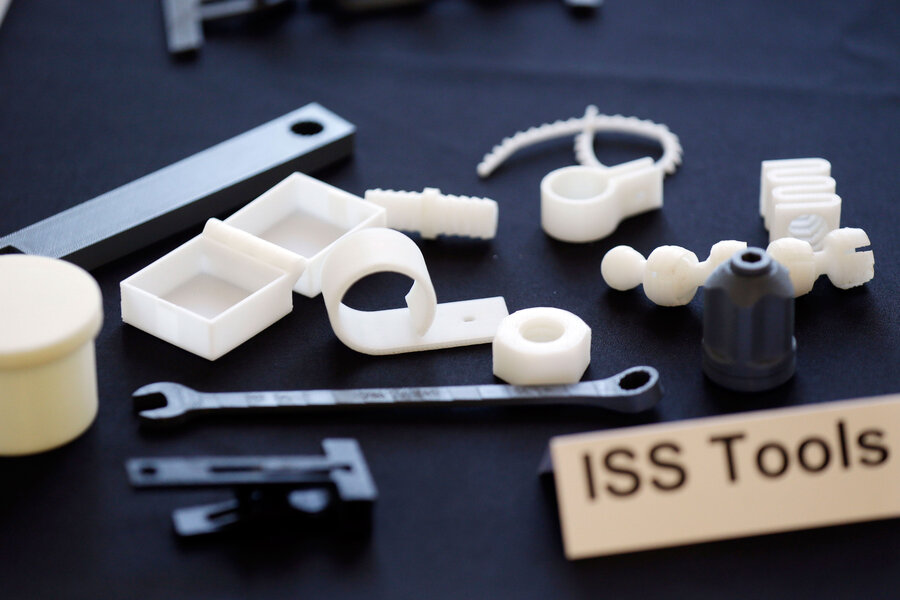Why NASA is investing in 3D printing in space
NASA increasingly views 3D printing as a key tool for advancing space exploration, and the technology is advancing in several directions.
A startup funded by NASA to create a zero-gravity 3D printer – appropriately called "Made In Space" – already has a prototype device on board the International Space Station (ISS), and the company said Friday that a new model is set for a March 23 launch, Dave Lee reported for the BBC.
In theory, when astronauts need a spare part or a replacement, they'll be able to print their own instead of requisitioning NASA and then waiting for the next shuttle.
"You can bring us a USB stick with your file, and we can digitally send it to space," Andrew Rush, chief executive of Made In Space, told the BBC. "Via 3D printing we can make that object and completely avoid putting it on a rocket."
Everything that NASA sends to the ISS costs thousands of dollars per ounce – a hefty shipping charge – and engineers on the ground must design and pack everything to minimize space requirements inside the spaceship while also withstanding the stress of launch.
The 3D printer project aims to simplify on-board maintenance, as astronauts could manufacture parts out of more easily shippable raw material when something breaks aboard the ISS.
In addition, zero-G lends itself to different design parameters, especially considering raw materials like moon dust and asteroids.
"The space environment is a very valuable and unique environment," Mr. Rush told the BBC. "We can make things that would just be impossible to create on Earth."
3D printing could prove the pinnacle of outsourced manufacturing, according to NASA.
"This new manufacturing process really opened the design space and allowed for part geometries that would be impossible with traditional machining or casting methods,” said David Eddleman, a member of the 3D printing team at NASA's Marshall Space Flight Center in Huntsville, Ala., in a press release. “For the valve designs on this engine, we used more efficient structures in the piece parts that resulted in optimized performance."
NASA announced in December that engineers had successfully printed and tested 75 percent of the parts required for a rocket engine, including valves, turbopumps, and injectors. The resulting pieces do not look like traditional engine parts, but they work at least as well.
"What matters is that the parts work the same way as they do in a conventional engine and perform under the extreme temperatures and pressures found inside a rocket engine," said Nick Case, the testing lead for the engine project, in a press release. "The turbopump got its 'heartbeat' racing at more than 90,000 revolutions per minute (rpm) and the end result is the flame you see coming out of the thrust chamber to produce over 20,000 pounds of thrust, and an engine like this could produce enough power for an upper stage of a rocket or a Mars lander.”
NASA's is pursuing 3D for more than just spare parts. A challenge launched in February invited "future engineers" to create a food preparation item using 3D printing. The challenge, which ends in May, aims to hook budding engineers while illustrating the possibilities of the new technology.
The winner of the challenge will join the mission control team to watch his or her design get printed aboard the ISS.









